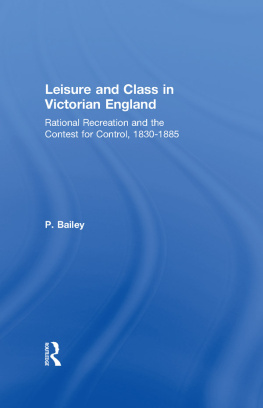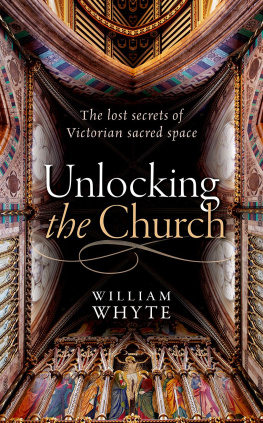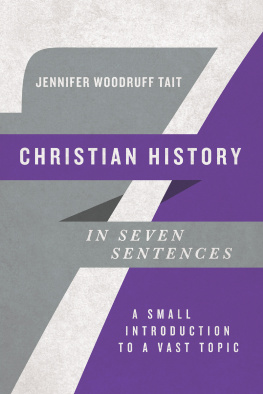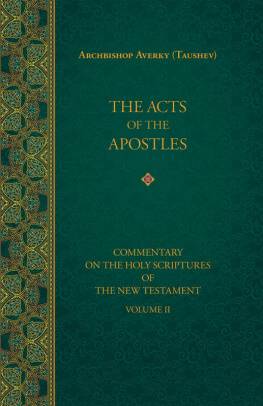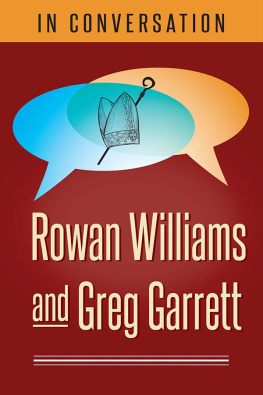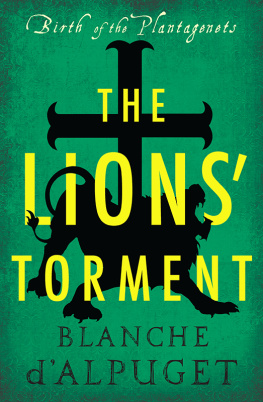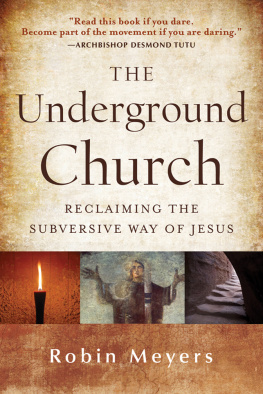ROUTLEDGE LIBRARY EDITIONS:
THE VICTORIAN WORLD
Volume 33
THE VICTORIAN CHURCH IN
DECLINE
THE VICTORIAN CHURCH IN
DECLINE
Archbishop Tait and the Church of England
18681882
P. T. MARSH
First published in 1969 by Routledge & Kegan Paul Ltd
This edition first published in 2016
by Routledge
2 Park Square, Milton Park, Abingdon, Oxon OX14 4RN
and by Routledge
711 Third Avenue, New York, NY 10017
Routledge is an imprint of the Taylor & Francis Group, an informa business
1969 P. T. Marsh
All rights reserved. No part of this book may be reprinted or reproduced or utilised in any form or by any electronic, mechanical, or other means, now known or hereafter invented, including photocopying and recording, or in any information storage or retrieval system, without permission in writing from the publishers.
Trademark notice: Product or corporate names may be trademarks or registered trademarks, and are used only for identification and explanation without intent to infringe.
British Library Cataloguing in Publication Data
A catalogue record for this book is available from the British Library
ISBN: 978-1-138-66565-1 (Set)
ISBN: 978-1-315-61965-1 (Set) (ebk)
ISBN: 978-1-138-65589-8 (Volume 33) (hbk)
ISBN: 978-1-138-65592-8 (Volume 33) (pbk)
ISBN: 978-1-315-62222-4 (Volume 33) (ebk)
Publishers Note
The publisher has gone to great lengths to ensure the quality of this reprint but points out that some imperfections in the original copies may be apparent.
Disclaimer
The publisher has made every effort to trace copyright holders and would welcome correspondence from those they have been unable to trace.
The
Victorian Church
in Decline
ARCHBISHOP TAIT
AND THE CHURCH OF ENGLAND
18681882
P. T. Marsh
First published 1969
by Routledge & Kegan Paul Ltd
Broadway House, 6874 Carter Lane
London, E.C.4
Printed in Great Britain by
Western Printing Services Ltd, Bristol
P. T. Marsh 1969
No part of this book may be reproduced
in any form without permission from
the publisher, except for the quotation
of brief passages in criticism
SBN 7100 6242 7
Contents
To Margaret
List of Illustrations
FrontispieceArchbishop Tait, reproduced by courtesy of Mrs. E. H. Colville
PERHAPS the most valuable reward I have gained in investigating the subject matter of this book and writing it has been the counsel, assistance and friendship which teachers, librarians and colleagues too numerous to list in full have given me; and to each I wish to express my thanks. A few must be singled out by name. My supervisors at Cambridge, Dr. G. Kitson Clark and Professor Owen Chadwick, have continued to give me generous moral as well as academic support. Professor Asa Briggs and Professor Hilda Neatby helped make a year of further study in England available to me, as did the Canada Council which gave me a years senior fellowship and in addition a summer research grant. The Warden and Fellows of All Souls College received me as the first and youngest of their visiting fellows cordially and sustained their interest in my work after I left. Mr. E. G. W. Bill and his staff at the Lambeth Palace Library did their best over several years to help me through the morass of the Tait papers even while they were being recatalogued. Mr. J. B. A. Boyle, Professor R. A. Soloway, Miss Anne Worden, Mr. J. S. G. Simmons, Dr. R. T. Shannon, Mr. Robert Blake and Dr. Clyde Binfield offered useful comments on individual chapters; Professor R. W. Greaves read through the final draft and kept me from going astray in many ways. The errors and weaknesses which remain are, of course, entirely my own. Mrs. E. H. Colville, Archbishop Taits great-granddaughter, opened her home, family papers and photographs to me. Above all, my wife not only sustained and encouraged me even when she found the subject remote, but worked through each chapter helping to sift the wheat from the abundant chaff.
I am grateful also to Her Majesty the Queen for her gracious permission to make use of material from the Royal Archives at Windsor Castle, to the Trustees of the Broadlands Archives for permission to use the diary of the seventh Earl of Shaftesbury at the National Register of Archives, and to the National Trust for permission to quote from the Beaconsfield papers at Hughenden Manor. If by oversight I have trespassed upon anyones copyright I sincerely apologize.
Note on References to the Tait papers
Because the recataloguing and indexing of the Tait papers have not been quite completed (April 1968), I have not been able to verify my references to a few of them. These references are readily distinguishable because they do not give the new volume and folio numbers and instead cite the numbering of the original letter registers (which are available), e.g. Penzance to Tait, 18 Dec. 1880, Tait papers, 1880 Home 144 or Memorandum on the representation of the clergy in Convocation, 31 Jan. 1881, by Selborne, Tait papers, 1880 separate packets.
For centuries there has not been a time of so much practical and hearty work, so much earnest preaching, so much instruction and consolation given, so much affectionate care for the poor and for the young.
Gladstone to the Queen, 22 Jan. 1874
IN the first half of Queen Victorias reign, until Gladstones electoral victory of 1868, the Church of England enjoyed its last comparatively secure period of national strength. On the negative side the Churchs enemies, though newly invigorated, were held in check. Protestant Nonconformists who were aware that their following was approaching the size of that of the established Church and were therefore determined to end religious discrimination by the State found themselves, to their surprise, pushed back into the political wilderness. Roman Catholicism, awakened out of a century and a half of sleep by the conversion of Newman and Manning, was disappointed that the subsequent flow of defections from the Church of England never amounted to more than a trickle. Freethought muffled its voice for fear of undermining popular morality.
Positively, the established Church displayed almost prodigious energy. In the Oxford Movement it produced one of the two new, wholly Anglican religious movements of major importance in the Church of Englands history.* The Church also proved most unexpectedly that it was capable of thorough administrative reform. By spreading elementary schools over the country, the Church sought to reassert its social and intellectual grip on the country. Throughout the middle years of the nineteenth century to an extent unprecedented at least since the thirteenth, members of the Church, alive to its failures and inadequacies, dug into their pockets, gave of their time, and devised fresh methods to make its institutions effective. There was not in the Victorian Church a great deal of the complacency which subsequent generations have claimed to see in it. Though authoritative statistical evidence of popular support is lacking except for 1851, and though indifference especially among the labouring classes and the destitute remained massive, it is probably correct to say that the Church of England made greater headway in these years than any of its religious rivals. Controversy among the parties or schools of thought within the Church became if anything more absorbing to the public and Parliament than controversy between denominations or about the relations of Church and State.


